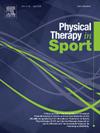超耐力参与者自我报告的损伤,重点是膝盖损伤:跑步、自行车和铁人三项的探索性横断面比较研究。
IF 2.2
3区 医学
Q1 REHABILITATION
引用次数: 0
摘要
目的:调查不同运动项目中超耐力运动员受伤的频率和部位。设计:横断面。方法:通过社交媒体广告招募超耐力跑步者、自行车运动员和铁人三项运动员参与基于网络的问卷调查。调查问卷的内容包括人口统计、比赛历史、训练特点和自报损伤。计算描述性分析和流行率以确定运动之间的差异。结果:258名参与者(年龄:46±11岁;(33%女性),129(50%)在过去12个月内自我报告受伤。尽管报道的伤害频率很高,但只有10%的伤害导致“严重”疼痛,7%的伤害导致停止参与。下肢,特别是膝盖、脚踝和足部是最常见的损伤部位。在过去的12个月里,跑步、自行车和铁人三项的受伤发生率相似,没有统计学上的显著差异。然而,在调整协变量后,与跑步者相比,自开始超耐力参与者以来,骑自行车者的膝盖损伤发生率明显更高(PR: 1.62;95% CI: 1.15-2.28, p = 0.006)。结论:超耐力参与者自我报告了相当数量的下肢损伤,但这在所有运动中都是相似的,疼痛水平和对表现的影响通常都很低。本文章由计算机程序翻译,如有差异,请以英文原文为准。
Self-reported injury in ultra-endurance participants with a focus on knee injuries: An exploratory cross-sectional comparative study of running, cycling, and triathlon
Objectives
To investigate the frequency and location of reported injuries among ultra-endurance participants competing in different sports.
Design
Cross-sectional.
Method
Ultra-endurance runners, cyclists and triathletes were recruited via a social media advertisement to participate in a web-based questionnaire. The questionnaire asked for information on demographics, competition history, training characteristics, and self-reported injury. Descriptive analyses and prevalence rates were calculated to determine differences between sports.
Results
Of the 258 participants (age:46 ± 11 years; 33% female), 129 (50%) self-reported an injury within the past 12 months. Despite high frequency of reported injury, only 10% of injuries resulted in ‘severe’ pain and 7% resulted in stopping participation. The lower extremity, and specifically the knee, ankle and foot, were the most common injury locations. Prevalence ratios for injury over the past 12 months was similar across running, cycling, and triathlon, with no statistically significant differences. However, cyclists demonstrated a significantly higher prevalence of knee injuries since starting ultra-endurance participant compared to runners after adjusting for covariates (PR: 1.62; 95% CI: 1.15–2.28, p = 0.006).
Conclusions
Ultra-endurance participants self-report a considerable number of lower extremity injuries, yet this is similar across sports, and both the level of pain and impact on performance impact is generally low.
求助全文
通过发布文献求助,成功后即可免费获取论文全文。
去求助
来源期刊

Physical Therapy in Sport
医学-康复医学
CiteScore
4.50
自引率
8.30%
发文量
125
审稿时长
39 days
期刊介绍:
Physical Therapy in Sport is an international peer-reviewed journal that provides a forum for the publication of research and clinical practice material relevant to the healthcare professions involved in sports and exercise medicine, and rehabilitation. The journal publishes material that is indispensable for day-to-day practice and continuing professional development. Physical Therapy in Sport covers topics dealing with the diagnosis, treatment, and prevention of injuries, as well as more general areas of sports and exercise medicine and related sports science.
The journal publishes original research, case studies, reviews, masterclasses, papers on clinical approaches, and book reviews, as well as occasional reports from conferences. Papers are double-blind peer-reviewed by our international advisory board and other international experts, and submissions from a broad range of disciplines are actively encouraged.
 求助内容:
求助内容: 应助结果提醒方式:
应助结果提醒方式:


